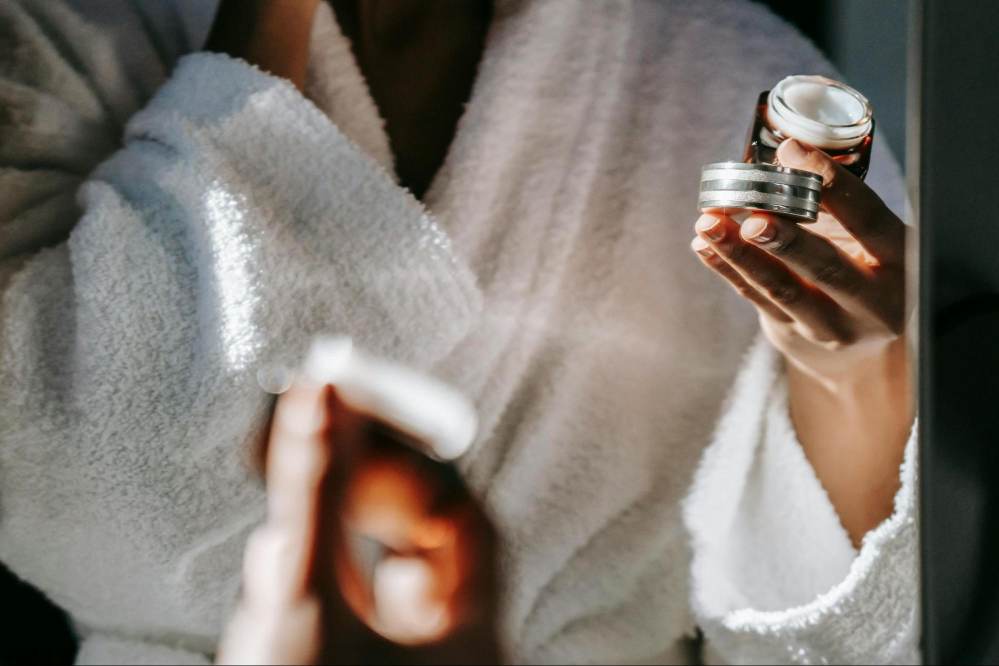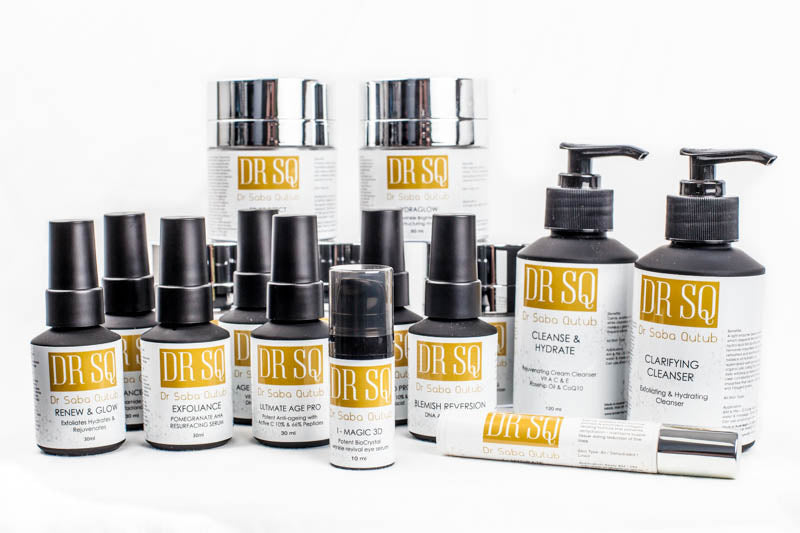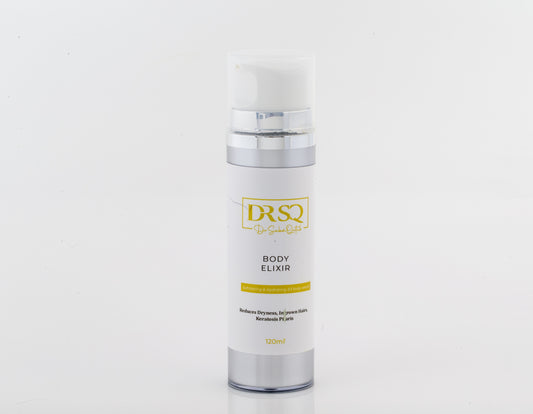Niacinamide and Vitamin C: Can You Combine Them?

Niacinamide and vitamin C are two highly regarded skincare ingredients that may provide a variety of individual benefits, from reducing enlarged pores to targeting premature signs of ageing, and hyperpigmentation. Both the ingredients are potent in their own ways, but can you use niacinamide and vitamin C together?
If myth is to be believed, then their combination neutralises the benefits of both. That’s not true!
Here are the specifics on what each component does for the skin and advice on how to use vitamin C and niacinamide successfully combined in your skincare routine.
Niacinamide Benefits
Niacinamide, sometimes referred to as vitamin B3 or Nicotinamide is a versatile skincare active having antioxidant properties that prevents skin damage. It breaks down into coenzymes that help your skin function properly crucial for maintaining its health and improving radiance.
Due to its water-soluble nature, and ability to normalise the lining of pores, it can diminish the appearance of stretched or open pores and associated dark spots, which is why you can witness a wide range of topical formulations infused with this versatile and multifaceted ingredient.

It is frequently used as a topical ingredient having substantial benefits, such as:
- Improving hydration
- Reducing post-acne hyperpigmentation
- Supporting against ageing
- Reducing acne and facial redness
- Targets rough and uneven texture
Vitamin C Benefits
An antioxidant preferred for long by skincare enthusiasts for anti-ageing, vitamin C comes with scientific support to aid in keeping skin tone and appearance even and youthful. It functions well when used under broad-spectrum sunscreen and in combination with other antioxidants, especially vitamin E.
Vitamin C is a sensitive substance susceptible to deterioration when exposed to air and light. Look for vitamin C goods with airtight and light-protective packaging when shopping. It has numerous more skin-friendly properties;
-
Offers pro-ageing support
- Brightens skin
- Reduces inflammation
- Diminishes the appearance of scars
- Targets melasma and hyperpigmentation
Niacinamide Vs Vitamin C
Niacinamide is a somewhat potent substance; unlike antioxidants like vitamin C, it is less affected by light and air. Formulating the product at a nearly neutral pH is crucial to maintaining niacinamide's stability and effectiveness.
On the other hand, pure ascorbic acid, or vitamin C, thrives in an acidic, low-pH environment. Vitamin C and niacinamide only produce the unwanted by-product – nicotinic acid when mixed for a lengthy period in a high-temperature setting.
That temperature is higher than you'd typically encounter at home, such as leaving a box of skin care products in the sun for a few days.

It's also pivotal to note that this worry only pertains to pure vitamin C and not any of its numerous other forms, including ascorbyl glucoside, tetrahexyldecyl ascorbate, and magnesium ascorbyl phosphate.
Can You Use Vitamin C and Niacinamide Together
The good news is that you can combine niacinamide-containing products in your skincare with vitamin C-containing products. You can either choose a product formulated with both or apply one followed by the other; for example; a vitamin C and niacinamide serum will suffice. Niacinamide and vitamin C interact differently with the skin when combined.
Combining niacinamide and pure vitamin C (ascorbic or l-ascorbic acid) is all right, as daily applications of these potent components do not include the conditions that result in nicotinic acid.
This duo is complementary and supremely popular in anti-ageing skincare formulations and can offer synergistic benefits to the skin.
Benefits of Mixing Niacinamide with Vitamin C
Skin that bears niacinamide can noticeably reduce the look of wrinkles, enlarged pores, and lacklustre, while vitamin C protects it from environmental stresses and minimises dullness as a powerful antioxidant. It further lessens the signs of ageing.
These components may work as a potent team to combat uneven skin tone, wrinkles, dullness, and loss of firmness. You can get a complexion that gradually gets visibly younger-looking, luminous, more even, and smoother, regardless of whether you have sensitive, oily, combination, or dry skin.

That makes combining vitamin C and niacinamide together safe and likely to revitalise the skin’s appearance.
How to Layer Vitamin C and Niacinamide?
Generally, what you can do;
First, cleanse your skin properly and let it dry. Then apply vitamin C serum and niacinamide product in the end. This is what the common practice suggests.
However, there is no universal way of layering vitamin C and niacinamide. You must take a skincare expert’s advice as the way of layering changes with the skin and product’s formulations. For optimal absorption, you can apply the “thinnest to thickest” idea as a rule of thumb to maximise results.
You must be aware of your skin type, before applying any skincare ingredient or trying any new combination to stop it from reacting uncertainly.
Start with lower-concentration products and gradually increase them to build your skin's tolerance for that skincare active.
Also Read: Glycolic Acid Vs Salicylic Acid: The Better Choice for Your Skin
Niacinamide or Vitamin C: What Goes First?
It’s not a bad idea to start with the thin-textured product followed by a thicker formula. It allows your skin to absorb products swiftly with less hassle.
If your vitamin C product has a thinner texture, apply it first. In the morning, it can prevent oxidative stress on the skin caused by pollutants. While, when used at night, it restores the depleted vitamin C concentration caused by solar radiation.
Should you be seeking a niacinamide and vitamin C serum, the below-recommended products are for you;
Radiance 3D - 10% Niacinamide serum
DRSQ’s Radiance 3D contains 10% niacinamide (vitamin B3) infused with ultra-low weight hyaluronic acid and sodium PCA. It may benefit your skin by reducing facial redness, irritated skin, congestion, and pigmentation, and promoting skin clarity, brightness, and vitality.

It is a potent boosting radiance serum that comes with anti-inflammatory and antioxidant benefits. You can find it driving helpful results in preventing hyperpigmentation and acne scars, leading to more rejuvenated and younger-looking skin.
Ultra C - 25% Vitamin C Serum + 15% Peptide
To get yourself a boost of vitamin C, you can try Ultra C serum. It has 10% ascorbyl tetraisopalmitate – a highly stable, oil-soluble derivative of vitamin C that is committed to its ability to penetrate the skin deeper.

This serum is formulated with skin-transformative ingredients 15% Terminalia ferdinandiana (Kakadu Plum), magnesium ascorbyl phosphate, and 10% active peptides that can protect the skin against sun damage, target discolouration, and promote collagen synthesis.
How Long To Wait After Vitamin C Before Niacinamide?
It is a good practice to let your skin absorb the first product before applying the second one, but not necessary. If you are willing to give your product an ample opportunity to dry out even slightly, it becomes easier to apply the next one.
However, this practice does not create a major difference in their benefits. Waiting for 10-15 minutes is not something most dermatologists would vouch for.
How Often Can I Use Niacinamide and Vitamin C Together?
Niacinamide is safe to apply every day and vitamin C two to three times a week if your skin is normal to combination types and can cope with them. Moreover, discipline is ideal to reach your skincare goals better and faster.

But it is not about niacinamide or vitamin C only. You must check with the other ingredients in the products as they may or may not interact well with your skin type. Sensitive skin types can begin with vitamin C once a week and niacinamide daily. This helps their skin adjust to the product more effectively.
Potential Side Effects, If Any:
Even if your skin care products contain most people’s favourite ingredients like vitamin C and niacinamide, your skin may not react well. It is not always the skin type, but genes, environmental conditions, and your hormones too that decide the ingredient's adaptibility to your skin.
This is why it's safe to perform a patch test and watch out for any indications of a possible adverse reaction. The most frequent reaction to using niacinamide and vitamin C together can be skin inflammation.
Any redness, discolouration, itching, or stinging during the patch test indicates that the product is not getting along with your skin.
It is advised to cease using that skincare or beauty product immediately and consult a dermatologist for the best advice for your welfare.
The Final Verdict
Niacinamide and vitamin C can be combined, in fact, these two are one of the most beneficial combinations reaping numerous perks. However, it's best to conduct a patch test beforehand and a dermatologist should always be consulted before adopting a new skincare regimen so you don’t end up getting reactions or cancelling up the benefits by using niacinamide and vitamin C in a wrong routine.
References
Journal of the American Academy of Dermatology, 48(1), 1–19
Cosmetics Science Journal
Dermatologic Therapy, 20(5), 349–359
Contact Dermatitis Journal, 60(1), 1–12
Dermatologic Surgery, 31(7), 814–81



